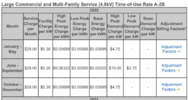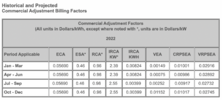It's not all Regen, at least not battery Regen per se ... going up the hill a lot of it is Kinetic Energy converted to Potential Energy "stored" in the mass of the entire vehicle, batteries included, and even some in the human occupant . Then the PE is converted to KE coming back down the hill. I daresay it's 100% efficient roundtrip from KE to PE to KE. All vehicles have it, not just EV's, even people have it.
But I think the driver skill is in fact to keep that PE conversion as efficient as possible, you want to minimize inefficient energy transfer elsewhere. If the driver applies acceleration to maintain constant speed going up hill, then you're converting battery energy, and then invoking battery Regen going down, losing some energy to roundtrip Regen inefficiency (or otherwise you' may lose it to increased air drag from faster speeds). So on smaller rolling hills, it's more efficient to actually minimize Regen by letting the vehicle slow down and speed up through KE-PE-KE conversion, though too fast you increase air drag. But on the big climbs like the Grapevine, you have no choice but to invoke some Regen to not go too fast, but it's only like 4% of the battery coming down the other side (all the lost energy was steady road and air drag losses that are the same whether on the flats or the hills).
So I marvel more at nature's battery (Potential Energy), 2nd the likely skill of the driver probably trained to make the most use of Regen, PE, and speed to maximize hypermiling, and distant 3rd the Regen.






